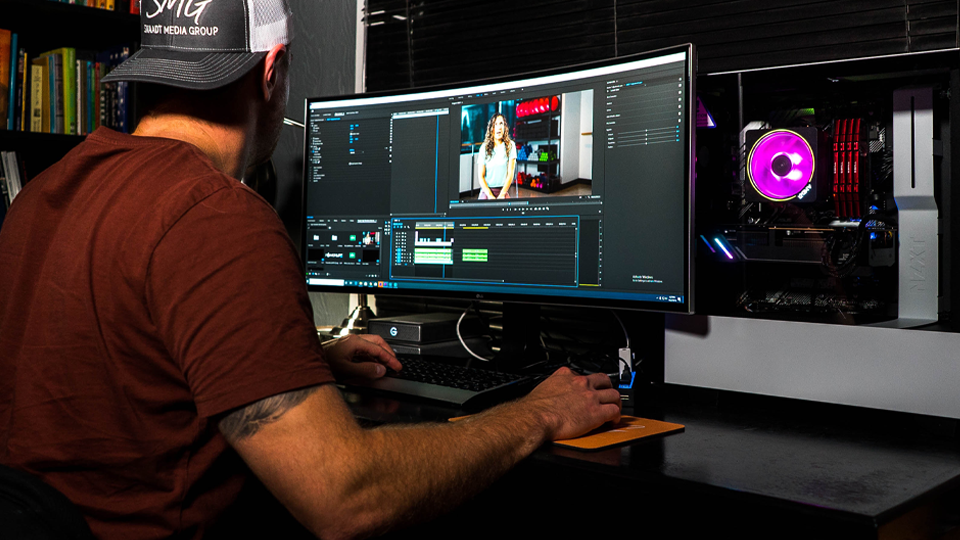Creating worlds with sound: The artistry of Foley and its influence on film

Samuel Taggart

4 Minutes

Foley art brings movies to life in the most subtle ways.
When it comes time to sit down and enjoy a film, at home or in the theater, audiences often take for granted the level of detail that goes into creating the immersive reality that plays out on-screen. One of the most interesting yet least appreciated aspects of film and television production is Foley art, the organic creation of ordinary sound effects added in after filming to enhance the cinematic experience.
What sets Foley apart from other audio effects is that these recording are not random sound effects plucked from a vast digital library; Foley sounds are recorded live by a team of people, with an arsenal of props and a pretty wild unbounded imagination. Their job is to match the precise movements on the screen with the sounds being recorded in the studio. From the clink of a coffee cup placed on a saucer to the ominous crunch of a troll’s footfall, Foley artists breathe an extra bit life into a movie by accentuating the drama, the details, and the atmospheric elements that pull us deeper into the story.
To really appreciate Foley, it’s important to recognize it an art form with a rhythm and a performance all its own; it is “acting” in a similar way the on-camera actors play their parts. The process almost always starts with footsteps, the most common and critical sound that Foley artists create. Every character in every movie has a distinct footfall, a sound that reflects their personality and the context of their actions. The gentle tap of a woman's high-heeled shoe, the heavy trudge of a soldier's boot, or the fluttering rustle of a superhero's cape—each is meticulously crafted to add depth and dimension to the characters and the story.
So, as they get into their roles, Foley artists become performers themselves: "walking" in the character's shoes, their own footsteps syncing with the actor's on-screen. But the artistry extends beyond footsteps. Foley artists recreate every sound a character would make based on what they interact with on-camera—the jangle of keys, the rustle of a jacket, the creak of a door, or the hiss of a beer bottle opening—each prop-sound helps draw the audience deeper into the reality of the film, and that comes directly from the Foley recording studio.
Creating these sounds requires both a knack for creativity, a dedication to precision, and a keen ear. Foley artists might find themselves using crab legs to simulate the heavy tread of a monster, crunching and cracking as it takes each step, or applying a stun gun to a bushel of grapes for that otherworldly alien sound of it communicating. The key to Foley is to close your eyes during the recording process; it doesn’t matter what object creates the sound as long as it matches the necessary tone that drives the narrative forward. To create a "satisfying sonic texture" that feels organic, yet also intriguing to the listener, is to do the job of Foley well.
But Foley isn’t a one-person show: Foley artists always collaborate with sound mixers. The Foley artist is the person actually handling the prop that makes the sound, but it's the sound mixer that enhances those recordings with a variety of plug-ins, morphing those original sounds it into something larger than life. From subtly adjusting a sound's volume to altering its tonality or readjusting the placement of a microphone in the studio, the sound mixer helps the Foley artist's creations find their ideal place within the film's soundscape.
The crux of the Foley process remains grounded in the raw, physical manipulation of objects to create authentic sounds that resonate on a deeply human level—but it always comes down to “selling the sound.” This, often times, takes a bit of ingenuity. Take the sound of a kiss, for instance. In the Foley studio, those artists aren’t kissing one another all day to get the recording right; instead they kiss they back of their hand to get the perfect smooching sound.
Foley is a demanding art form and, at its core, is a labor of love. Artists work with precision, matching their sounds down to the split-second to sync with the on-screen action. To do it right requires research, intuition, and an nearly intuitive understanding of how sounds interact with our perception of story and character. They are the unseen performers of the film world, their stages cluttered with a dizzying array of props, and their minds filled with inventive ways to use them. From footsteps to weather effects, the sounds Foley artists create are an integral part of the cinematic experience, enhancing every moment with richness, depth, and realism.
The next time you settle in for a movie night, lend an ear to the rustling of leaves, the soft footsteps of a Hobbit, and the ambient sounds of the planet Pandora that envelop you. Take an extra moment to appreciate the subtle, creative genius of Foley artists, those invisible performers who make the magic of cinema a reality we can hear, feel, and fully absorb.



































